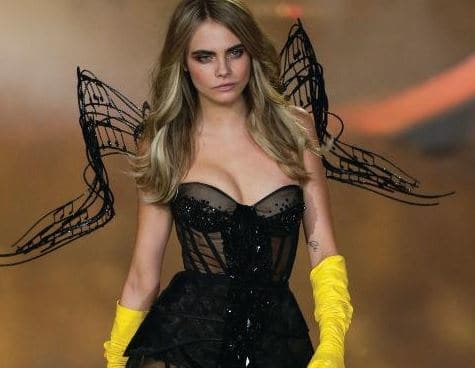Designers are slowly introducing the fashion sector to new technologies, and most recently, fashion designers are easing the industry into the advances of 3D printing and its potential revolution of customised pieces within ready-to-wear.
The Business Advantage Group found that 3D Printing has seen a 47% growth, with more expected for 2015. Growth is expected within all industries at varying adoption rates; in manufacturing the use of 3D printing is expected to grow by 39% (increasing 2015 usage from 33% to 46%).
MecklerMedia‘s New York 3D Print Fashion Show
On 16 April, MecklerMedia Corporation and its sponsor Materialise will host the inaugural 3D Print Fashion Show, as part of the 3D Print Design Show and 3D Print Week NY, in New York City.
The fashion show has drawn top 3D print fashion designers from around the world, who will create and showcase their innovative ad original pieces espically made for the show.
One of the show‘s main attractions is 3D print fashion designer, Melinda Looi, who first teamed up with Materialise to design “Asia‘s First 3D Printed Fashion Collection”, which was inspired by birds and launched at Malaysia‘s first print fashion show in 2013.
On April 16, the three times winner of the ‘Designer of the Year‘ award at the Malaysian International Fashion Week, will unveil her second 3D collection in collaboration with the fashion show‘s sponsor, 3D print software provider, Materialise.
Her second collection will feature the world‘s first full-length evening gown, 3D-printed as a single part flexible enough to slink and vamp with a woman‘s body.
Speaking about 3D-printed garments, Looi said: “When you think of constructing with a sewing machine, you‘re always thinking in terms of how to use fabric and thread, … But with 3D printing, you‘re not limited to that.”
Custom-printed: The impact of 3D-Printing on Ready-to-Wear
“3D printing will change the world,” Looi explains. “Maybe not now, but in times to come 3D printing will usher in a new era by enabling machines to produce objects of any shape, on the spot, and as needed.”
If 3D-printing becomes the new reality of the fashion sector, printers could revolutionise the way we order clothes of the future.
Consumers could potentially access custom garments more reflective of Haute Couture rather than today‘s popuar and affordable Ready-to-Wear lines. By image scanning their bodies, customers could order clothes that fit perfectly and leaves more room for further customisation, including: size, colour aned material.
Dutch 3D-fashion designer, Iris Van Herpen highlighted the benefits of 3D-printed garments over RTW: “people have been wearing the wrong sizes of clothes for far to long. Everybody could have their owns body scanned and just order clothes that fit perfectly.”
Austrailian architect, Julia Körner added that this revolution could lead to an “exciting moment in fashion design.”
“Body scanning and 3D-modelling techniques allow you to design towards a perfect fit, and through minimal changes in the code I can create variations of adaptions in the design. This automated process is a revolution in customised fashion pieces within ready-to-wear.”
3D Printing‘s effect on mainstream manufacturing
This would also revolutionise the manufacturing process . At the moment production costs are based on the amount of items a designer produces, but with 3D printing this will no longer be the case.
3D printing would help smaller brands and companies as it will become cheaper and more efficient than current manufacturing methods.
Emily Thornhill


















